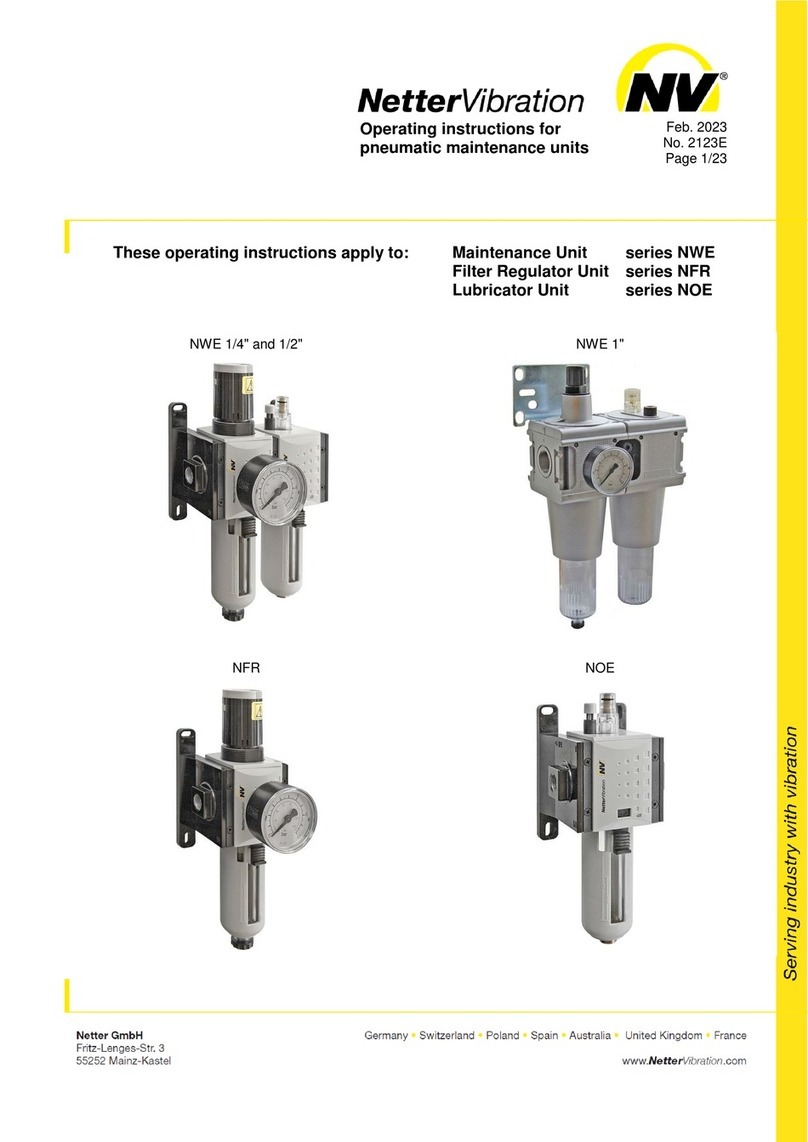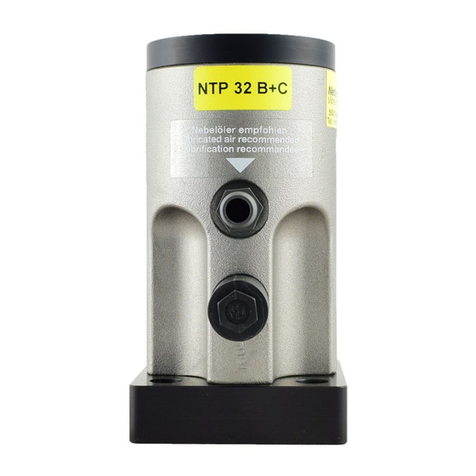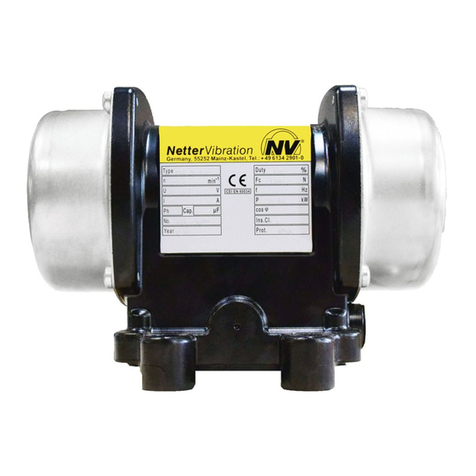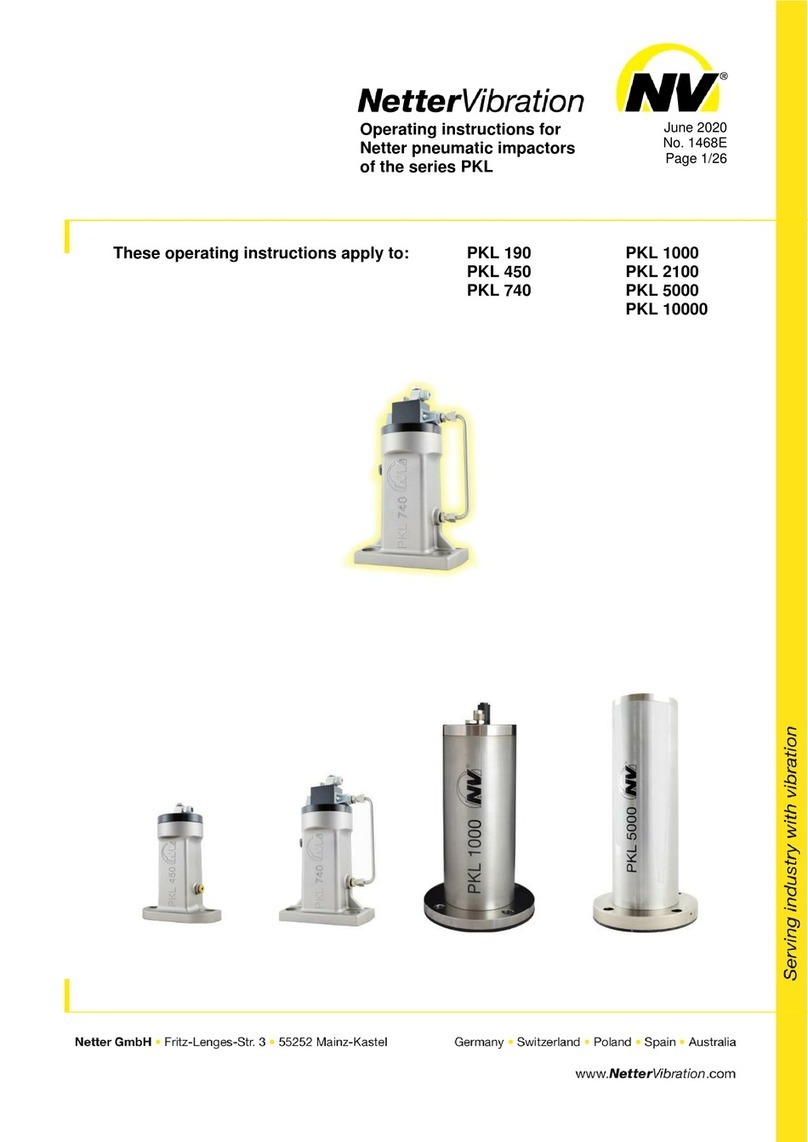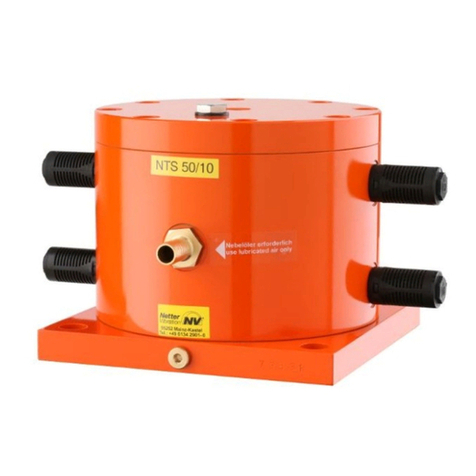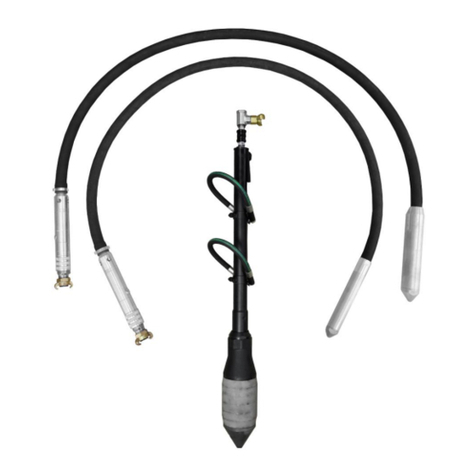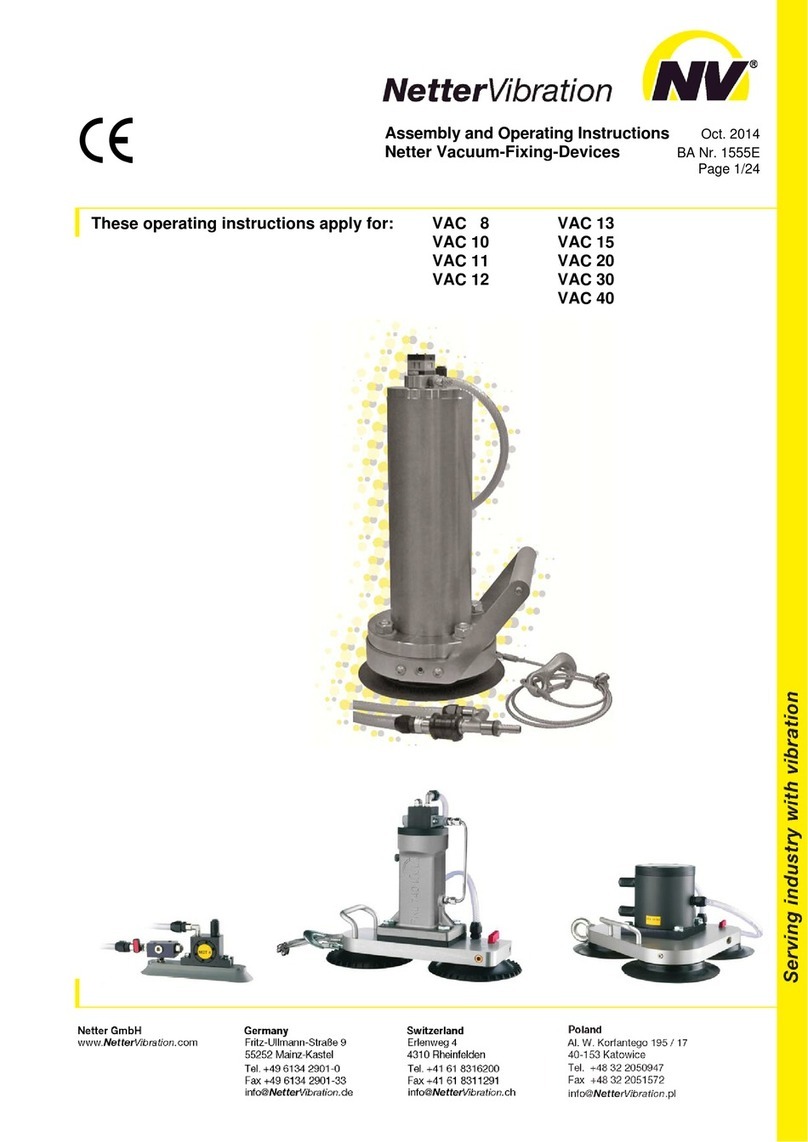1 General information
Before installing the NEG/NEH read these instructions carefully. It is the
basis for any action when dealing with the NEG/NEH, and may be used for
training purposes. The instructions should be subsequently stored at the
operation site.
The target group for these instructions is technical staff, who have basic
knowledge in mechanics and electrics.
Only complying technical staff may work on the NEG/NEH.
The NEG/NEH may only be installed, put into operation, maintained, trou-
bleshot and disassembled by persons authorised by the operator.
This documentation is protected by copyright.
Netter
Vibration reserves all rights such as translations, reprinting and re-
production of the instructions, as well as parts thereof.
All technical information, data and instructions for installation, operation
and maintenance in these instructions are based on the latest information
available at the time of printing and take our past experience to the best of
our knowledge into account.
No claims can be derived from the information, illustrations and descrip-
tions in these operating instructions.
The manufacturer does not assume liability for damages resulting from:
•failure to observe the instructions,
•improper use,
•unauthorised repairs,
•technical modifications,
•use of non-permissible spare parts.
Translations are made to the best of our knowledge.
Netter
Vibration does not assume liability for translation errors, even if the
translation was made by us or on our behalf. Only the original German text
remains binding.
The high frequency electric external vibrators of the series NEG and NEH
comply with the EC Machinery Directive 2006/42/EC, the electromagnetic
compatibility directive 2014/30/EU and the low voltage directive
2014/35/EU.
In particular the standards EN ISO 12100, EN 60529 and DIN EN 60034-1
has been observed.
